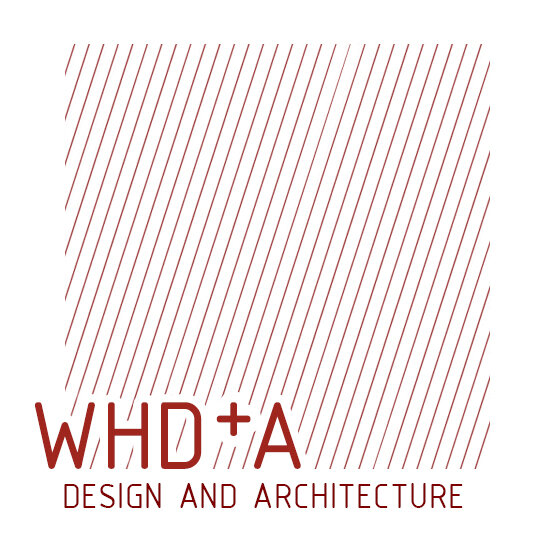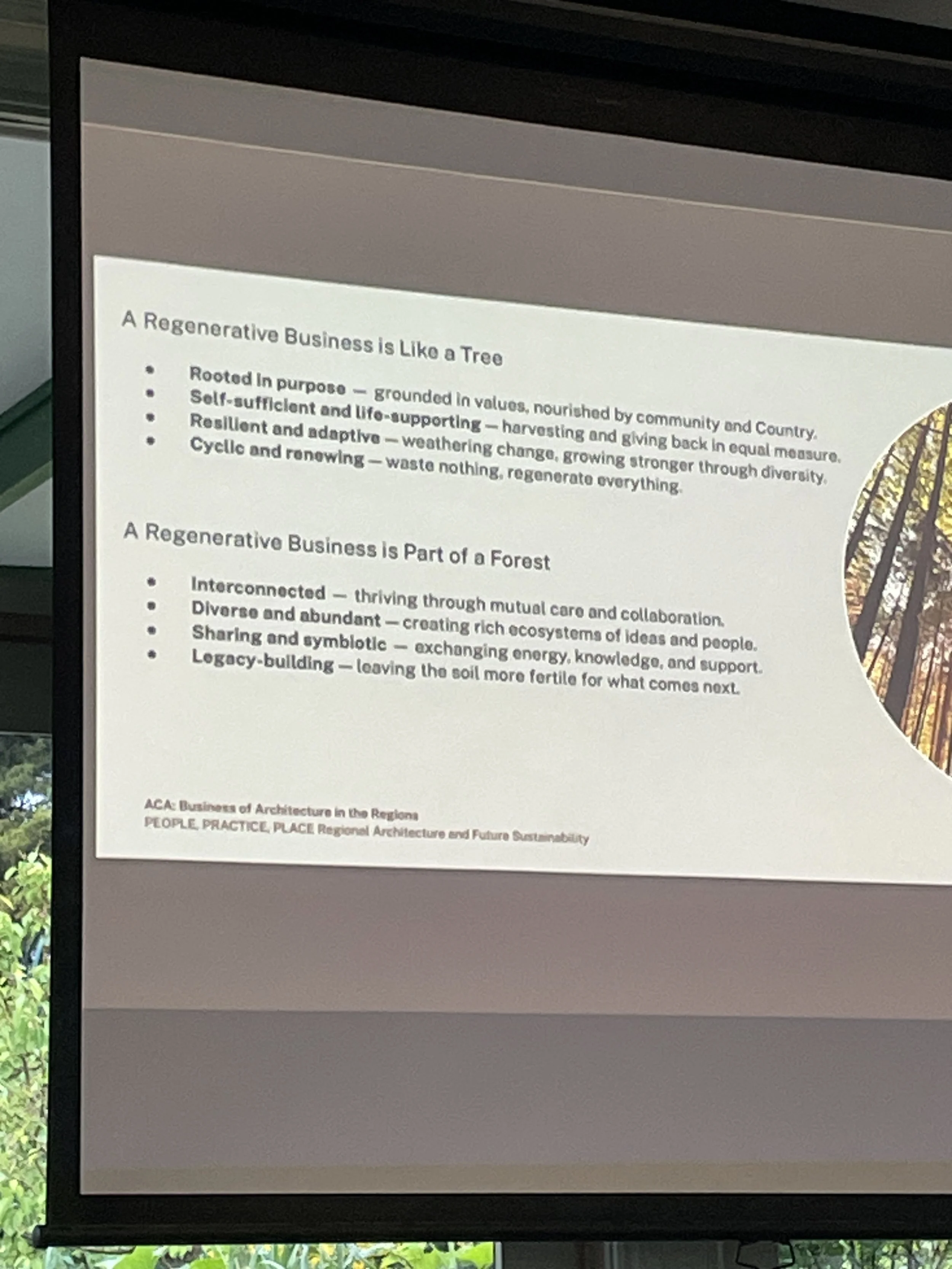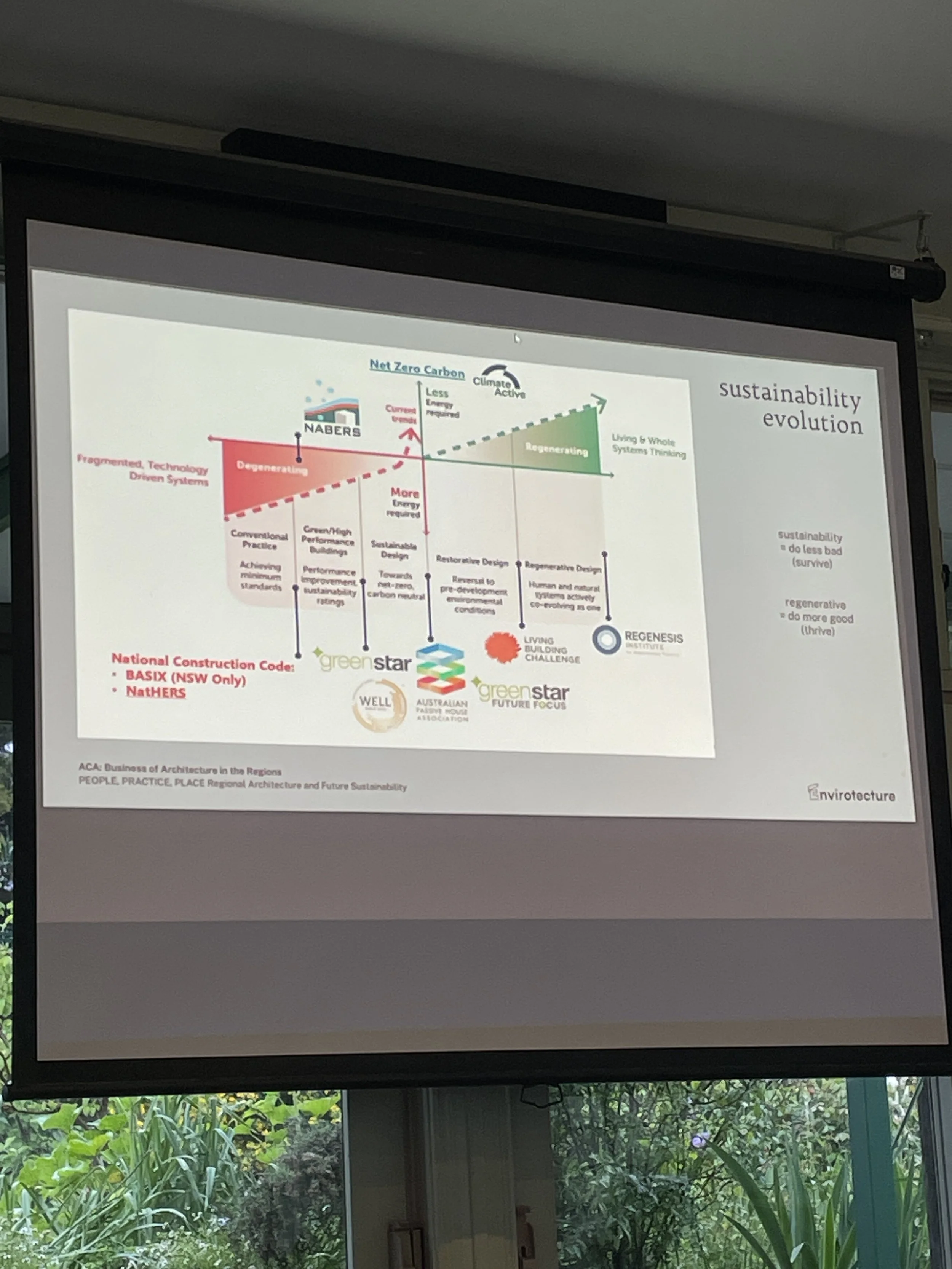Association of Consulting Architects - Regional Practice Forum 2025 - People, Practice and Place DAY 2 notes
Dear Readers,
By popular demand (mostly by Barbara Moje) I’ll do my best to give you a short recap of Day 2 of the Regional Practice Forum, held on Sunday 26th October 2025. A much smaller crowd today at the Buda Historic Home and Garden in Castlemaine. Extremely wet and cold as well. I can assure you that during the night prior at the Railway Hotel most of us left by around 10pm so we were all refreshed and ready to go. A brisk walk around the Botanic Gardens, and also the Kalimna Park Loop Track (just before the rain really took off) and I too was ready to go!
What this photo doesn’t show are 5 of this fella’s mates that hopped away - “Are you looking at me? Are you looking at me? Well there ain’t no one else around here… “
Session 1 the theme was Practice Sustainability (Sustainability as a Business). Talina Edwards of Envirotecture and Shae Parker-McCashen of Green Sheep Collective respectively gave short introductions to their practices, but also a handful of reflections on specific intentional actions that helped their own motivations, their unique selling points and areas of expertise.
Edwards gave a quick history into her practice. She gave the idea that being in business – any business – is a bit like being a tree. It has a life cycle with different stages that are defined. Further that any business – or architectural practice for that matter – lives in a forest. Metaphors on being grounded ne’ rooted (not the pejorative), changing with the seasons, being part of a network, sharing, being connected and leaving a legacy greater than oneself.
Her talk did cover a bit about some of the milestones in her practice, which included making the decision to specialse in PassiveHaus design, as well establishing relationships with builders using the mass-builder model in part to be able to scale her studio’s offerings to a wider pubic – being the greatest transformative in her practice because she can demonstrate the benefits her design methodology brings. In a nutshell aiming for Net Zero - less reliance on fossil fuels and finite resources in the long-term running and maintenance of the housing projects that create very comfortable and energy efficient homes that her team works on. This is a strong value-add in any person’s metric.
In terms of being able to communicate with her clients the benefits of going through an architectural process and to use say a PassiveHaus or GreenStar environmental assessment model, Edwards noted that emphasizing the health benefits were more impactful than say lifestyle benefits – particularly for families with young children and empty nesters.
Parker-McCashen gave a broad presentation, a commentary on the conflict between the built environment constantly aiming for sustainability and resilience, but architectural practice broadly gaining few of the benefits. The risks of burnout, being uncomfortable in tolerating scope & time creep and the like flying in the face of what we all want – sustainable architectural practice.
Parker-McCashen emphasized the value of intentionality (versus being reactive) and reminding the participants that architecture is more than just buildings – it’s about building understanding. Without her explicitly saying this, my read is that the emphasis on the client, their needs, our collective understanding and the output we all get (finished project and sustainable practice) is something that is continually built upon and doesn’t (or shouldn’t) be lost in the day-to-day phases of architectural projects.
I think the audience got the sense of Parker-McCashen’s sense of responsibility not only for her clients, but also for those closest to her – her family, her staff, her friends. I was very taken with this approach and reminder, and being grounded in intentionally putting client first at least gives me heart in what I – and many other practitioners – do. And with good practice systems and habits, the rest follows.
The panel discussion curated by Brad Hooper was very lively, quite a lot of provocations. The theme on all the discussion was “how can architects have greater reach”, and latching from Sarah-Hobday-North’s previous day’s presentation on reaching “more than the 5%” of consumers who do engage with architects.
Here were a few provocations put forward by audience members:
Shae Parker-McCashen, Talina Edwards and the host for the event Brad Hooper - what is the next step to proliferate architectural practice within the community?
- Introduce the legislative requirement that architects are used on most public or medium scale and above residential projects
The cynic out there is probably screaming that this is about giving more work to architects, however the pragmatist suggests that because of the environmental, social and economic realities that we practice within, our design thinking can have the greatest impact on the built environment that every Australian could benefit from. It’s something to be leveraged and embraced.
What was missing from this discussion was the elephant in the room – housing affordability, and lack of supply in the market. Without me going into economics that I would be hard pressed to explain well (not to mention challenge the Howard-era of economic policies that have been baked-into the economic and social fabric of Australia), this would need states, territories and the federal government to take a “war footing approach” to delivering housing, to treat this as a human right that needed every reasonable measure put into making this possible – compared to what is present, and that is as a tradable commodity and one where the demands for social housing are not met - my guy feel is most likely to do with lack of polticial capital to be gained (votes) rather than addressing serious economic and societal issues of doing nothing.
- Development of architectural style & system guides, not unlike the “Age Homes Service” (I’m sure there have been others… you tell me I’m no historian), as a baseline of quality.
This to me sounds a bit like developing a suite of building systems for use in specific climates and housing models ie. families, empty nesters, single professionals etc… see Talina Edwards and the types of projects her studio works on. Thinking about the enclosure, insulation and glazing systems to achieve say, a defined built environment assessment model - and above. Or, simply “kit of parts” systems that could be applied to any plan arrangement. See above, if state and federal governments identified supplying a mixture of housing for example as a major priority and accepted that they are vote-loss leaders, then this kit of parts could be used on developing a model to suit.
- I’ll quote Stuart Tanner for this one, “We need to get copies of Architecture Australia sold at Bunnings”
I will add, “also Green Magazine too”. That is making architecture, design and sustainability more widely accessible and available to the body politik.
One audience member asked “what role can local government play in places like the Macedon Ranges?”, and some of the ideas that came out of discussion included:
- Establish consortiums with not-for-profits and developers
- Adopt a mindset of being a “socially-conscious developer” to address access to housing and the prevailing homelessness crisis.
Session 2, the last one for the conference presented by Paul Viney was on ACA Business Tools available to all members. We all got a crash-course into looking at how the ACA’s Fee Calculator Tool can help members come up with not only suitable hourly rates (based on one’s own practice – not arbitrary commercial rates), but determine a range of hours needed for most project typologies.
The last discussion was really about “where to next” for the ACA? Some ideas the audience came up with included:
- Develop ways to normalize architectural services into the public at large (Sarah Hobday-North may have answered this question…?)
- Develop ways to integrate our services with other businesses, i.e builders or D and C providers.
- What other things could the ACA promote as benefits to engaging with architects?
The author remembers a fantastic research project by ArchiTEAM with the University of Melbourne (led by Associate Professor Peter Raisbeck) “Research for Architects in Small Practice” aka RaSP presented in 2020.
The residential projects surveyed in this project suggested that over the course of 10 years, the benefit of being an architect-design project could add up to $256,000 to the capital value, (or around +1.2% per annum) in metropolitan areas. To me, this knowledge seems to be under-utilized in practice.
Summary of the ArchiTEAM UoM RaSP research project
As English academic Professor Flora Samuel suggests in her book “Why Architects Matters”…
“If architects can evidence their value in a manner that the rest of the world understand the protection of the title [of the architect] becomes a non-issue. Their value becomes self-evident.”
If the data is compelling, why isn’t this piece of evidence being used to promote why architects should be more widely engaged with?
Given what Edwards mentioned earlier that communicating the health benefits in architect-design projects was very compelling to her clients, why not gather statistics on the environmental performance, or even energy and utilities use to use in a similar way to ArchiTEAM’s RaSP project?
My final thoughts – this was one of the best value architectural conferences that I’ve ever attended. I was energized by being part of the discussion, and as a participant I did feel part of a collegiate body of professionals. Yes it helped that I stuck around to go to the pub afterwards, but maybe it was because of the modest number of attendees, maybe it was because of something else.
My expectations about the event were completely challenged! I was expecting more discussion about practice, systems and fees given the ACA’s stated position on supporting practices in their business of architecture concerns. However, and this goes to the strength of the presenters, design work, ideas and inspiration featured throughout, particularly in Day 1. These became narrative devices to demonstrate the success of practice systems at work!
I think Day 1’s Session 4 from the emergent practices probably needed the most “steering” by the event organisers. Maybe you think differently, but for me it was hard to come away with takeways of strategies to employ in your own practice (beyond the “what not to do” war-stories told!). Take this with a grain of salt, in what was an extremely successful two day event.
I’m looking forward to attending the next conference, hopefully see you there!
Let me know what you think.
Thanks for reading.
Photo credits include Angelina Pillai and the author.
Redmond Hamlett is a Director (Projects) at WHDA.







